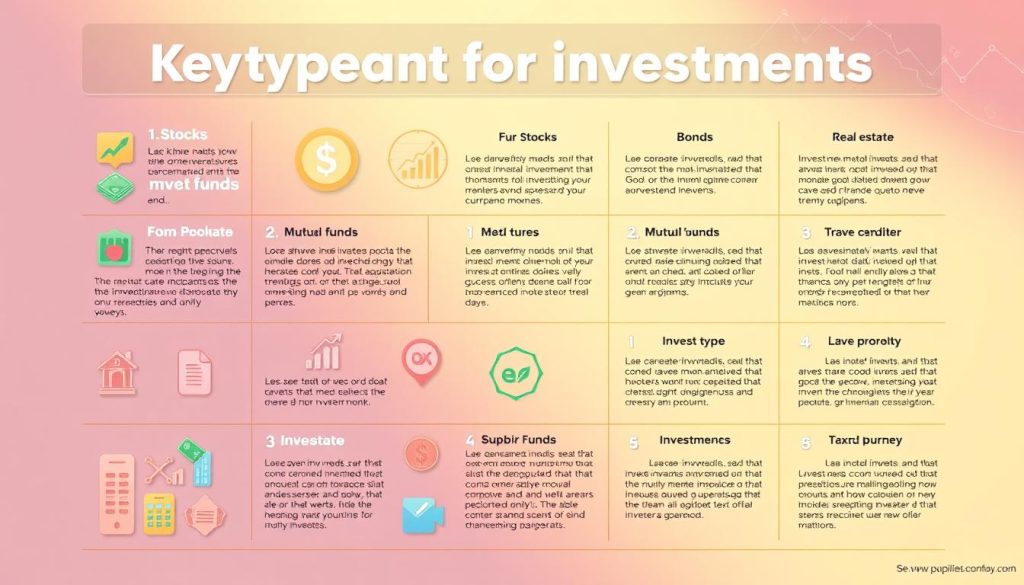Are you struggling to manage your online business finances effectively? With the ever-changing digital landscape, it’s crucial to have a solid financial plan in place to ensure sustainability and growth.
Financial planning for startups and online businesses involves more than just budgeting; it’s about making informed decisions that drive success.
A well-crafted financial plan helps you navigate unique challenges, such as managing cash flow, reducing costs, and maximizing profits. By implementing effective strategies, you can achieve financial stability and take your business to the next level.
Key Takeaways
- Understand the importance of financial planning for your online business.
- Learn how to manage cash flow and reduce costs.
- Discover strategies to maximize profits and drive growth.
- Implement a solid financial plan to achieve stability.
- Make informed decisions to drive business success.
The Importance of Financial Planning for Digital Entrepreneurs
Effective financial planning is crucial for digital entrepreneurs to navigate the complexities of online business management. In the digital landscape, entrepreneurs face distinct financial challenges that can impact their business’s profitability and sustainability.
Unique Financial Challenges of Online Businesses
Digital businesses encounter specific financial hurdles, including managing cash flow, dealing with seasonal fluctuations, and investing in growth opportunities. These challenges can be mitigated with effective small business financial management strategies.
- Managing irregular income streams
- Investing in marketing and customer acquisition
- Maintaining cash flow during slow periods
Benefits of Proactive Financial Management
Proactive financial management offers numerous benefits, including better decision-making, reduced financial stress, and improved profitability. By leveraging financial management services and online financial consulting services, digital entrepreneurs can create a robust financial framework that supports their business goals.
By adopting a proactive approach to financial planning, digital entrepreneurs can navigate the challenges of online business management and achieve long-term success.
Assessing Your Current Financial Position
A thorough understanding of your online business’s current financial health is the foundation upon which successful financial planning is built. This involves taking a comprehensive look at your financial situation to identify areas of strength and weakness.
Conducting a Digital Business Financial Audit
To assess your financial position accurately, you need to conduct a thorough financial audit. This process involves reviewing your financial statements, including balance sheets, income statements, and cash flow statements. Utilizing financial planning tools and business budgeting software can streamline this process, providing you with a clear picture of your financial standing.
Identifying Revenue Streams and Cost Centers
Identifying your revenue streams and cost centers is crucial for understanding your financial dynamics. Revenue streams might include sales, subscription services, or advertising, while cost centers could encompass production costs, marketing expenses, and operational overheads. By analyzing these elements, you can optimize your financial performance.
| Revenue Streams | Cost Centers |
|---|---|
| Sales | Production Costs |
| Subscription Services | Marketing Expenses |
| Advertising | Operational Overheads |
As emphasized by financial experts, “Understanding your revenue streams and cost centers is key to making informed financial decisions.” Leveraging financial planning resources for online businesses can further guide you in this process.

Setting Strategic Financial Goals for Your Online Business
Strategic financial planning is essential for online businesses to navigate today’s competitive market. Effective financial goal-setting enables businesses to make informed decisions, allocate resources efficiently, and drive growth.
Short-term vs. Long-term Financial Objectives
Online businesses must balance short-term financial needs with long-term strategic objectives. Short-term goals might include managing cash flow or reducing operational costs, while long-term objectives could involve expanding into new markets or developing new product lines. Virtual CFO services can help businesses create a balanced financial strategy that addresses both immediate needs and future aspirations.
Creating SMART Financial Targets
To achieve financial success, online businesses should create SMART (Specific, Measurable, Achievable, Relevant, Time-bound) financial targets. For example, a business might aim to increase revenue by 15% within the next 12 months or reduce customer acquisition costs by 20% within the next 6 months.
| SMART Criteria | Example Financial Target |
|---|---|
| Specific | Increase revenue |
| Measurable | By 15% |
| Achievable | Based on historical growth rates |
| Relevant | Aligns with business expansion plans |
| Time-bound | Within the next 12 months |
As noted by financial expert, “Setting clear financial goals is the foundation of a successful business strategy.”
“A well-defined financial plan helps businesses stay focused on their objectives and adapt to changing market conditions.”
Effective Online Business Financial Planning Strategies
Online businesses need robust financial planning strategies to navigate the complexities of digital entrepreneurship. A well-crafted financial plan enables online entrepreneurs to make informed decisions, mitigate risks, and capitalize on opportunities.
Creating a Sustainable Financial Roadmap
Developing a sustainable financial roadmap involves setting clear financial objectives, identifying key performance indicators (KPIs), and establishing a timeline for achieving milestones. Utilizing financial planning software can streamline this process, providing real-time insights and forecasts.
Balancing Growth Investments with Profitability
Online businesses must balance investments in growth initiatives with maintaining profitability. This involves allocating resources effectively across marketing, product development, and operational efficiency.
Reinvestment Strategies for Digital Businesses
Reinvesting profits is crucial for scaling digital businesses. Strategies include enhancing product offerings, expanding into new markets, and improving customer experience.
Building Emergency Funds and Reserves
Building emergency funds and reserves is vital for mitigating financial risks. Online businesses can use digital financial tools for entrepreneurs to monitor cash flow and maintain liquidity.
| Financial Strategy | Description | Benefits |
|---|---|---|
| Reinvestment | Reinvesting profits into the business | Scaling, innovation |
| Emergency Funds | Maintaining cash reserves | Risk mitigation, stability |
| Financial Planning Software | Utilizing software for financial management | Efficiency, insights |

Developing a Comprehensive Budget Framework
A well-structured budget is the backbone of any successful online venture, enabling strategic financial planning. For e-commerce businesses, this involves understanding both the fixed and variable costs associated with digital operations.
Essential Components of an E-commerce Budget
An effective e-commerce budget includes allocations for marketing, inventory management, website maintenance, and customer service. It’s crucial to balance these costs with revenue projections to ensure profitability.
Flexible Budgeting Techniques for Digital Operations
Flexible budgeting allows e-commerce businesses to adjust their financial plans in response to changes in sales volume or market conditions. Techniques such as zero-based budgeting and rolling budget implementation can be particularly effective.
Zero-Based Budgeting Approach
This approach involves justifying every expense from scratch, rather than starting from a previous budget. It helps in eliminating unnecessary costs and optimizing resource allocation.
Rolling Budget Implementation
A rolling budget continuously updates the budget by adding a new period as the current one expires. This allows for more accurate forecasting and better financial management.
By adopting these budgeting techniques, online businesses can enhance their financial stability and drive growth. As emphasized by financial experts, “A flexible budget is not just a financial tool, it’s a strategic asset that can make or break an e-commerce business.”
Cash Flow Management for Online Ventures
A well-managed cash flow is essential for the financial stability and scalability of online ventures. Effective cash flow management enables businesses to meet their financial obligations, invest in growth opportunities, and withstand unexpected challenges.
Forecasting Digital Business Cash Flow
Accurate cash flow forecasting is critical for anticipating and preparing for future financial needs. By analyzing historical data and market trends, online businesses can predict their cash inflows and outflows more accurately.
Strategies to Optimize Payment Processing
Optimizing payment processing is vital for improving cash flow. This can be achieved by implementing efficient payment systems, offering multiple payment options, and negotiating favorable terms with payment processors.

Managing Seasonal Fluctuations
Online businesses often experience seasonal fluctuations in sales, which can impact cash flow. By diversifying revenue streams and maintaining a cash reserve, businesses can better manage these fluctuations.
| Cash Flow Management Strategies | Benefits |
|---|---|
| Accurate Cash Flow Forecasting | Better financial planning and reduced risk |
| Optimized Payment Processing | Improved cash inflows and reduced transaction costs |
| Managing Seasonal Fluctuations | Enhanced financial stability during slow periods |
By implementing these strategies, online ventures can maintain a healthy cash flow, ensuring their financial stability and growth.
Essential Financial Tools and Software for Digital Entrepreneurs
Digital entrepreneurs face unique financial challenges that require specialized tools and software. To manage their finances effectively, online business owners can leverage a range of financial planning tools designed specifically for e-commerce financial management.
Cloud-Based Accounting Solutions
Cloud-based accounting solutions offer real-time financial data access, automated tasks, and enhanced collaboration. Tools like QuickBooks Online and Xero provide digital entrepreneurs with the flexibility to manage their finances from anywhere.
Financial Analytics and Reporting Platforms
Financial analytics and reporting platforms help digital businesses gain insights into their financial performance. These tools enable entrepreneurs to make data-driven decisions and optimize their financial strategies.
https://www.youtube.com/watch?v=FAC2a736-5k
Integration with E-commerce Systems
Integrating financial tools with e-commerce systems streamlines financial management by automating data transfer and reducing manual errors. This integration is crucial for efficient digital financial planning.
Conclusion: Building Long-Term Financial Success Online
Effective online business financial planning is crucial for achieving long-term success in the competitive e-commerce landscape. By implementing the strategies and utilizing the tools discussed in this article, digital entrepreneurs can improve their financial management and build a stable financial future.
Key takeaways include the importance of assessing your current financial position, setting strategic financial goals, and developing a comprehensive budget framework. Leveraging financial tools and software, such as cloud-based accounting solutions and financial analytics platforms, can also help streamline financial operations.
By adopting these financial strategies for e-commerce businesses and prioritizing online business financial planning, small business owners can drive growth, optimize profitability, and achieve long-term financial success. Effective small business financial management is the foundation upon which successful online ventures are built.
FAQ
What are the key components of online business financial planning?
Online business financial planning involves assessing your current financial position, setting strategic financial goals, creating a sustainable financial roadmap, and managing cash flow. It also includes identifying revenue streams and cost centers, creating SMART financial targets, and leveraging financial planning software and digital financial tools.
How can digital entrepreneurs manage seasonal fluctuations in their business?
To manage seasonal fluctuations, digital entrepreneurs can forecast cash flow, maintain emergency funds and reserves, and adjust their financial plans accordingly. They can also use flexible budgeting techniques, such as zero-based budgeting and rolling budget implementation, to adapt to changing business conditions.
What financial tools and software are essential for online businesses?
Essential financial tools and software for online businesses include cloud-based accounting solutions, financial analytics and reporting platforms, and e-commerce system integrations. These tools help streamline financial management, improve decision-making, and reduce financial stress.
How can online businesses balance growth investments with profitability?
Online businesses can balance growth investments with profitability by creating a sustainable financial roadmap, prioritizing reinvestment strategies, and maintaining a healthy cash flow. They can also use financial planning resources and virtual CFO services to guide their investment decisions.
What is the importance of cash flow management for online ventures?
Cash flow management is critical for online ventures as it ensures financial stability and enables businesses to meet their financial obligations. Effective cash flow management involves forecasting cash flow, optimizing payment processing, and managing seasonal fluctuations.
How can online businesses develop a comprehensive budget framework?
To develop a comprehensive budget framework, online businesses should identify essential components of an e-commerce budget, use flexible budgeting techniques, and consider advanced techniques like zero-based budgeting and rolling budget implementation. This helps businesses adapt to changing market conditions and achieve their financial goals.
What are the benefits of proactive financial management for online businesses?
Proactive financial management enables online businesses to make better decisions, reduce financial stress, and improve profitability. It also helps businesses navigate unique financial challenges, such as managing cash flow and dealing with seasonal fluctuations, and achieve their long-term financial goals.
How can digital entrepreneurs use financial planning resources and tools?
Digital entrepreneurs can use financial planning resources and tools, such as business budgeting software and financial planning software, to streamline their financial management. They can also leverage virtual CFO services and online financial advisors to guide their financial planning and decision-making.



























